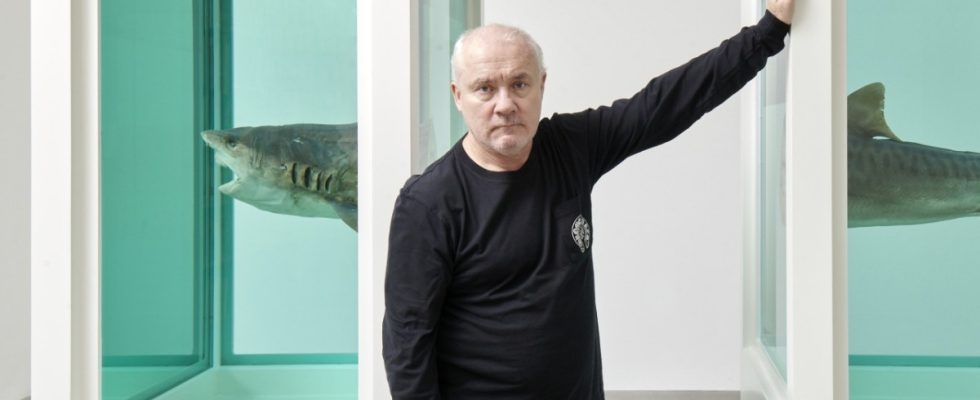A coup for Munich: This autumn, for the first time in Germany, some of Damien Hirst’s most iconic works will be on display in the privately run Muca (Museum of Urban and Contemporary Art). The exhibition entitled “The Weight of Things” begins on October 26th. More than 40 works from 40 years of the career of the artist and provocateur are on display.
The exhibition includes installations, sculptures and paintings, some of which have never been seen publicly, as well as some of Hirst’s best-known series, including Natural History (the controversial formaldehyde sculptures, such as featuring a shark preserved in this way and cut into several pieces) , Spin Paintings, Medicine Cabinets, Treasures from the Wreck of the Unbelievable, Cherry Blossoms, and his Spot and Butterfly Paintings.
Throughout his career, the Briton has reflected on the complex relationships between beauty and transience, religion and science, life and death. His level of fame is based not least on his considerable talent for self-marketing. Hirst first came to wider public attention in London in 1988 when he conceived and curated the group exhibition Freeze during his sophomore year at Goldsmiths College. She kickstarted a wave of new artists in the UK who redefined contemporary art.
Hirst has used formaldehyde in many of his works since 1991 to explore the relationship between art and science. These works are among his best known. The show “The Weight of Things” combines several examples of this series. Hirst began his spot paintings in 1986. As the name suggests, they consist of colorful dots that look as if they were painted by a machine. His spin paintings are known for energetic bursts of color and always have a random element.
“The Weight of Things” also features truly heavy clunkers like marble and bronze sculptures and lightboxes from the “Treasures from the Wreck of the Unbelievable” series. This was exhibited for the first time in 2017 in the Punta della Dogana and in the Palazzo Grassi in Venice. The works are based on a fictitious legend about an ancient shipwreck and interweave fact and fiction. And, in their own way, they are ideally suited to the fabulous prices that Hirst’s works achieved in some cases on the art market.

